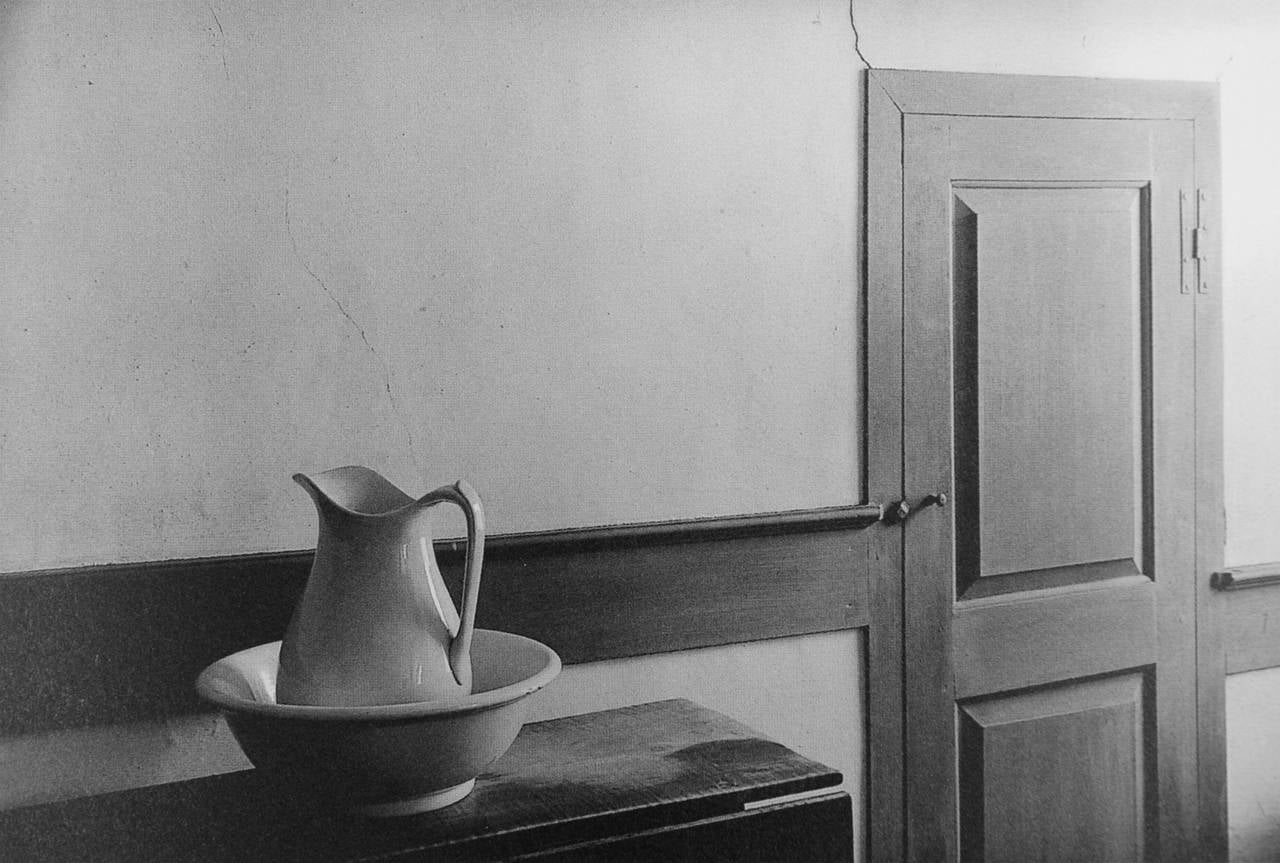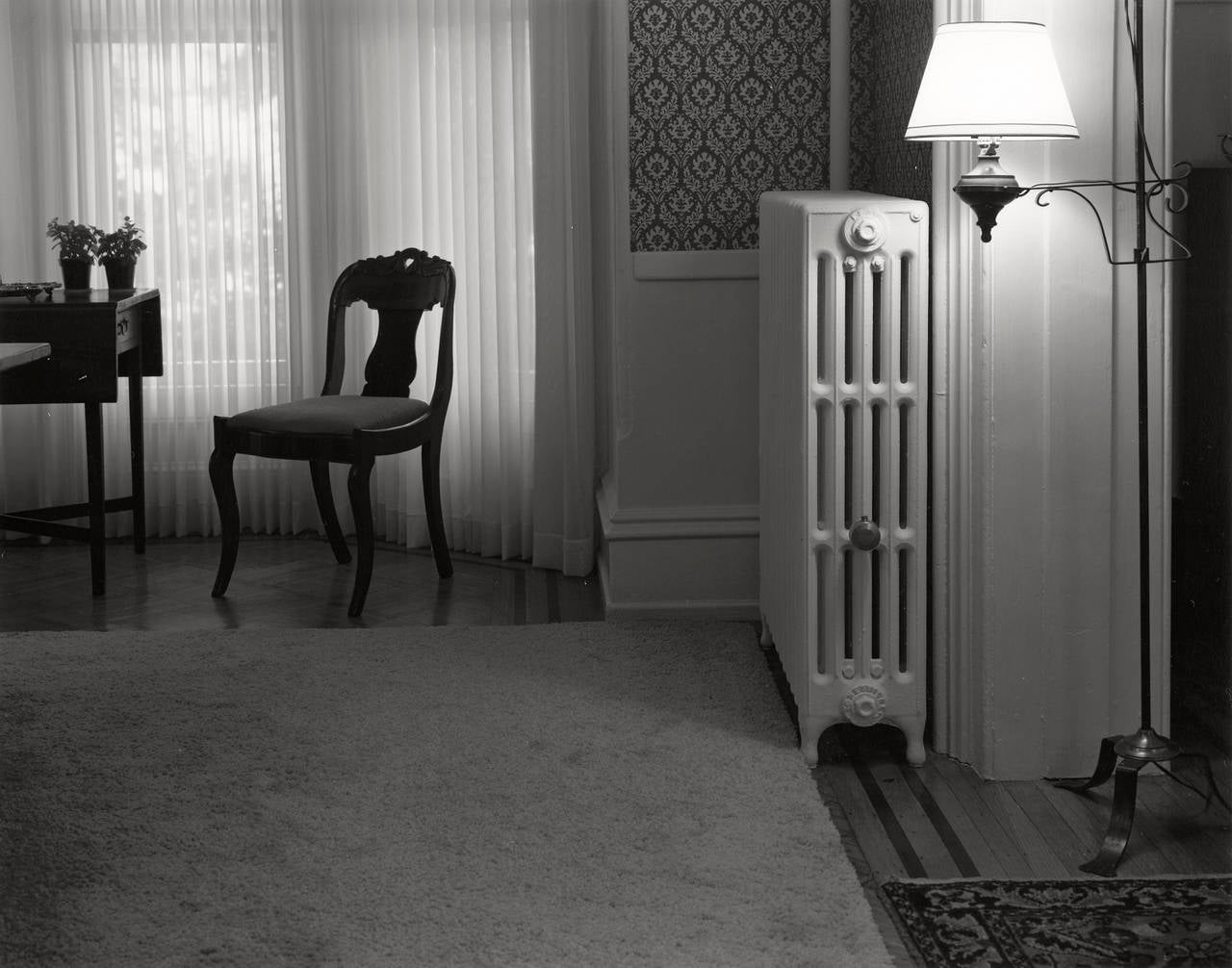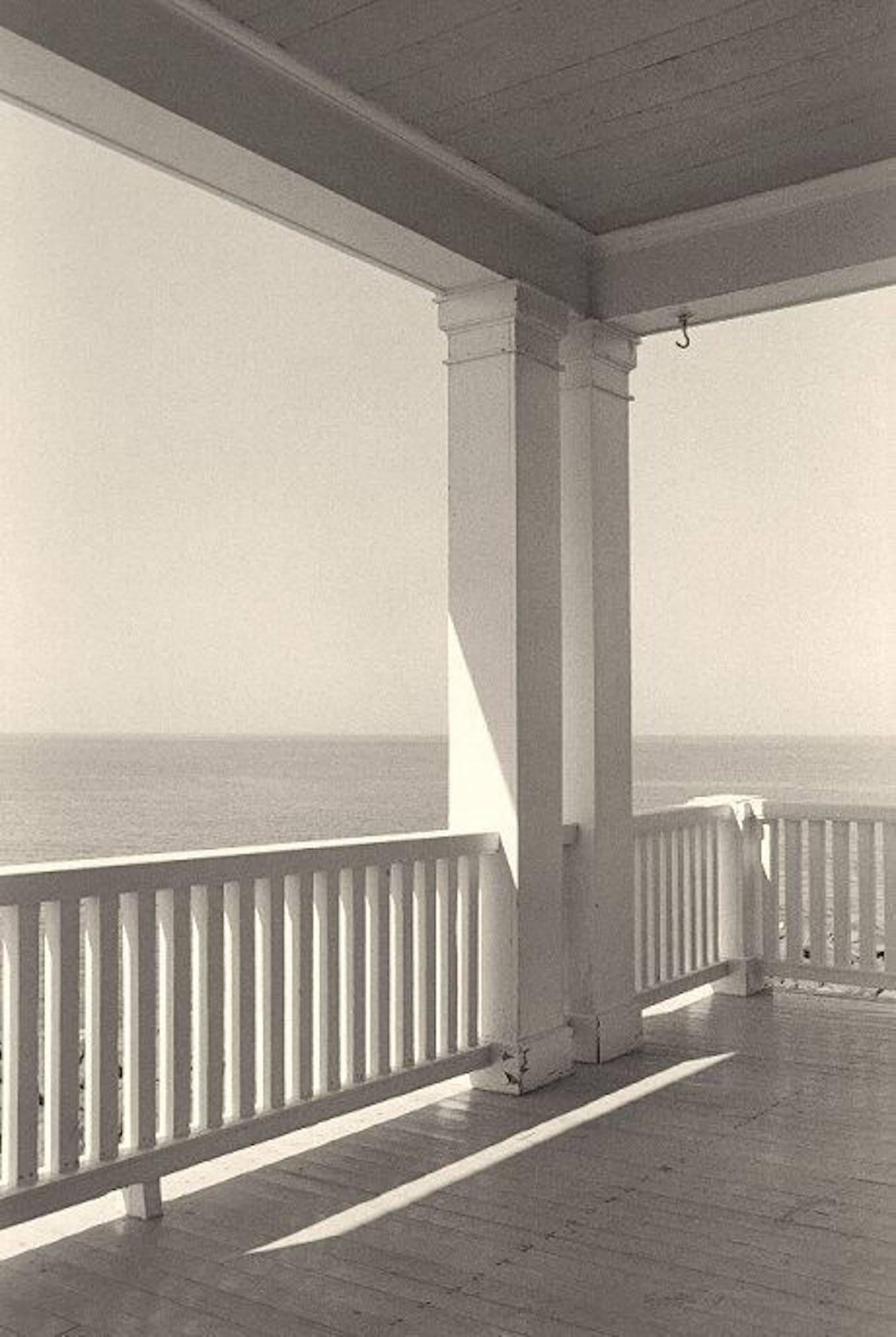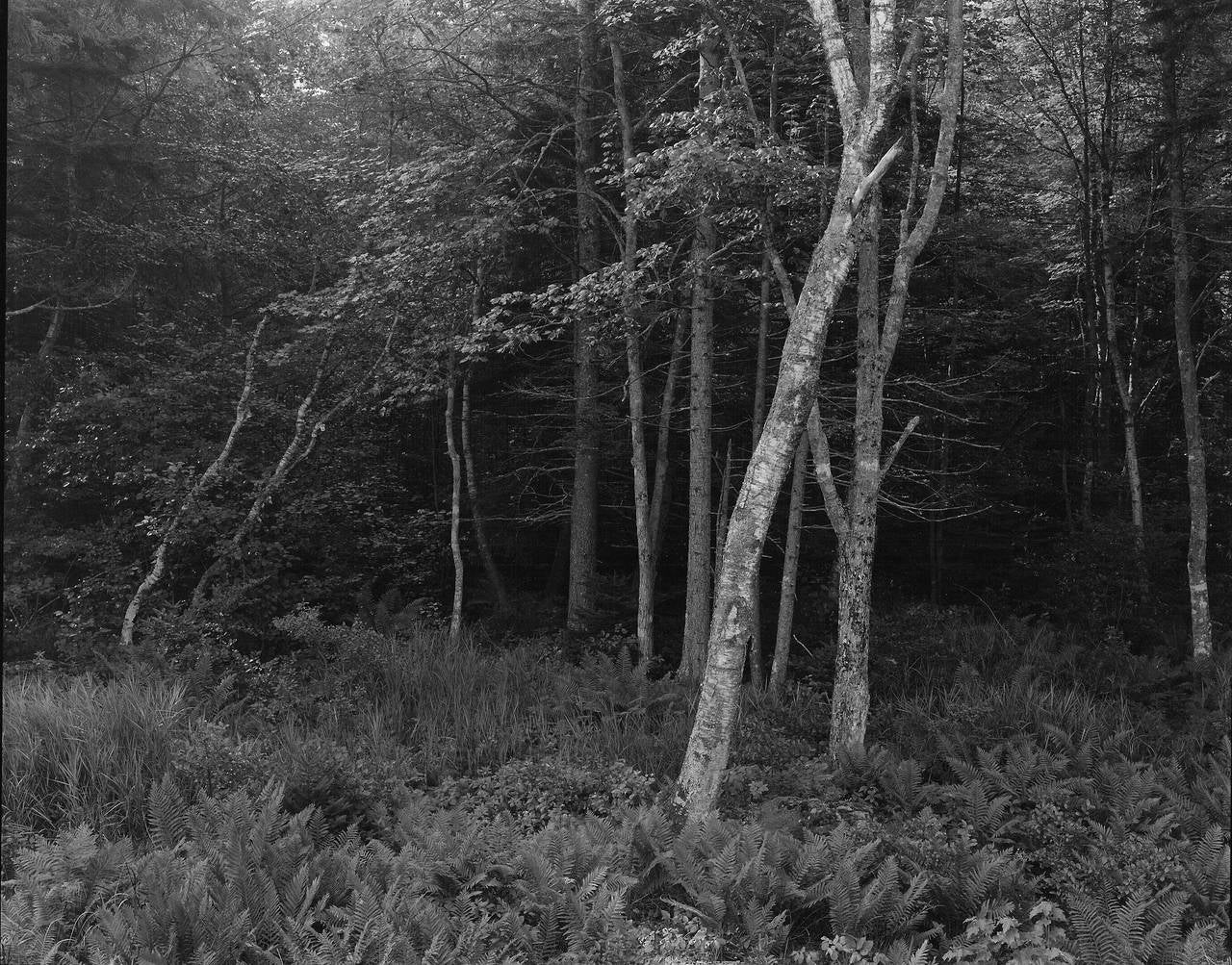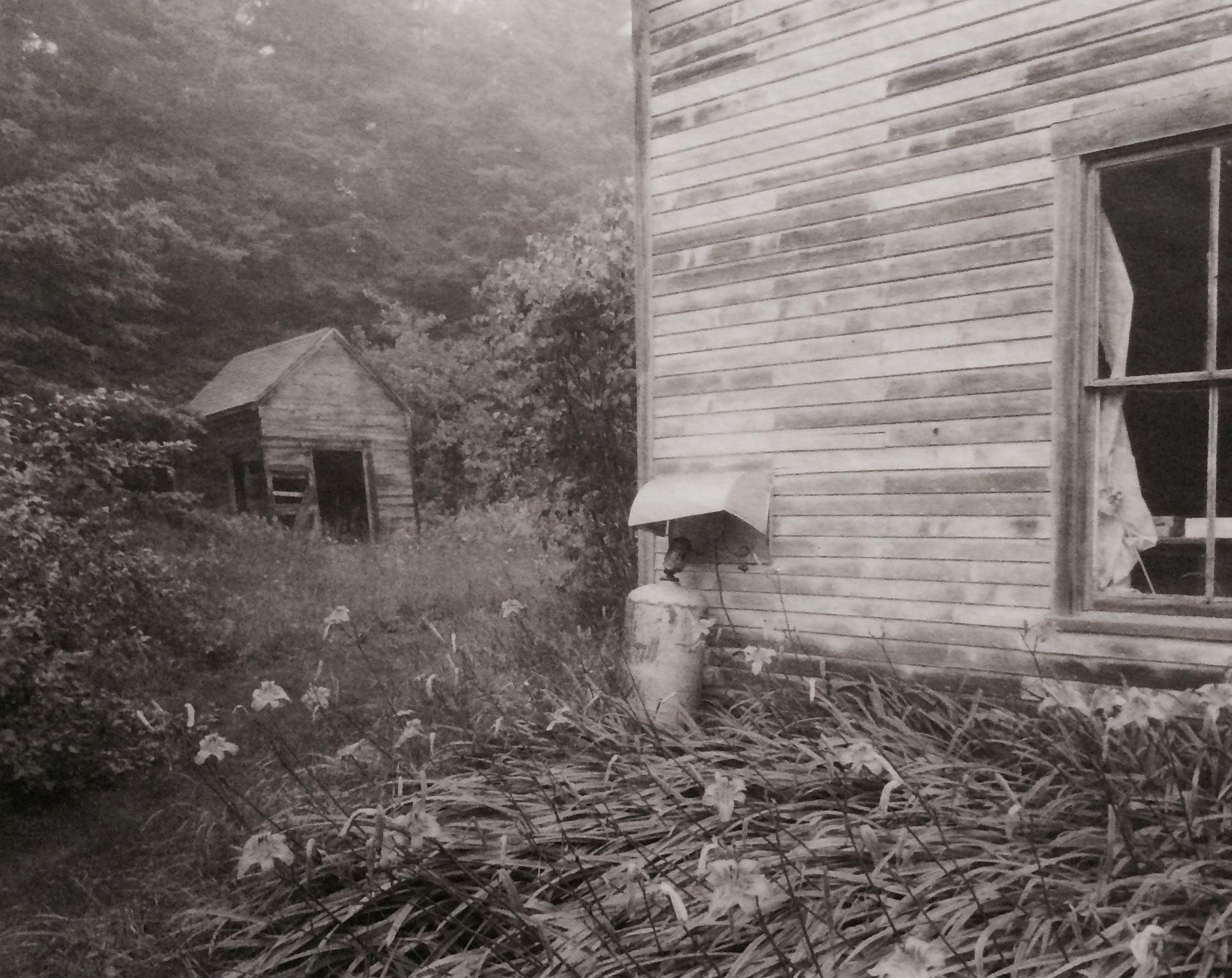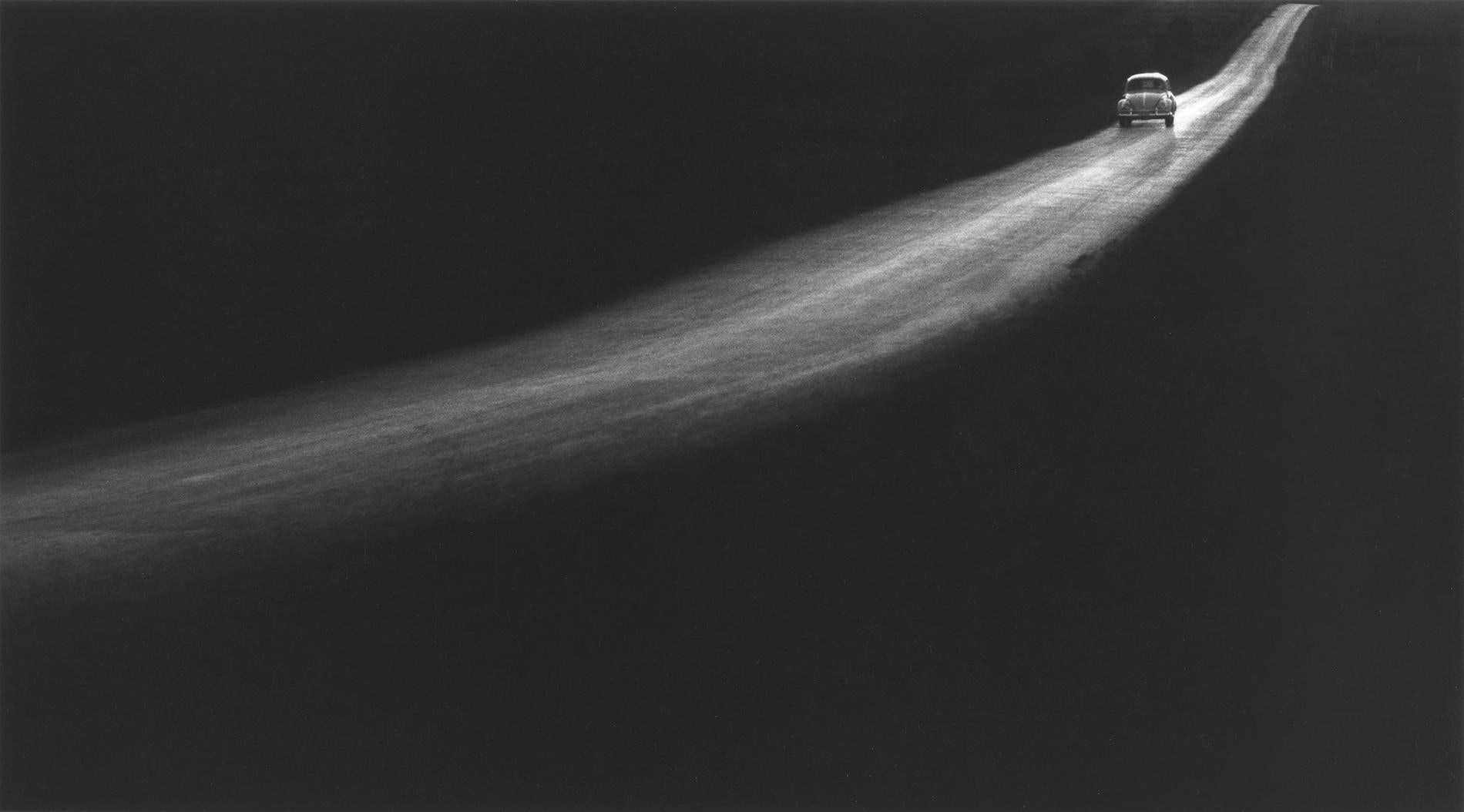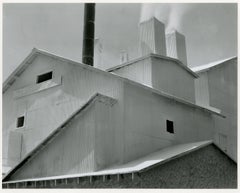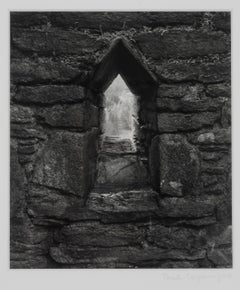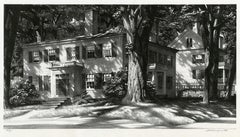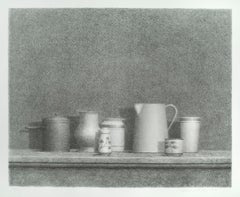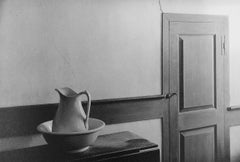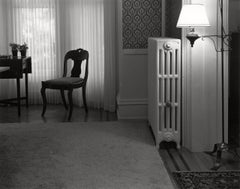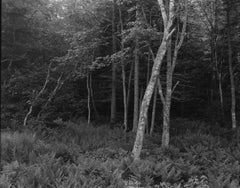Items Similar to Shaker Interior, Sabbathday Lake, Maine
Want more images or videos?
Request additional images or videos from the seller
1 of 10
George TiceShaker Interior, Sabbathday Lake, Mainec. 1971
c. 1971
$3,000
£2,276.33
€2,602.78
CA$4,190.19
A$4,658.92
CHF 2,432.63
MX$56,710.37
NOK 31,039.29
SEK 29,082.33
DKK 19,425.03
Shipping
Retrieving quote...The 1stDibs Promise:
Authenticity Guarantee,
Money-Back Guarantee,
24-Hour Cancellation
About the Item
Shaker Interior, Sabbathday Lake, Maine
Silver print, selenium toned, 1971
Signed in pencil lower right (see photo)
Titled verso (see photo)
Printed c. 1971
Condition: Excellent
Image: 6 1/2 x 9 3/8 inches
Frame: 14 x 17 inches
Original Kulicke welded frame
George A. Tice, born in Newark, New Jersey, United States, October 13, 1938, the son of a college-educated New Jerseyan, William S. Tice, and Margaret Robertson, a Traveller of Irish, Scottish, and Welsh stock with a fourth-grade education. George was raised by his mother, maintaining regular visiting contact with his father, whose influence and advice he valued highly.
Education
His first contact with photography was in the albums of family photographs belonging to his father, and this gave him the desire to create images of his own. George Tice began with a Kodak Brownie. In 1953, having bought a Kodak Pony, which gave him some control over exposure and focus, and a Kodak developing kit, he began to advance his craft. George Tice also joined the Carteret Camera Club. Tice's photographs of homeless men on the Bowery won second place in the black and white print competitions. George Tice decided at this point to make photography his career.
In 1955 George Tice attended the Newark Vocational and Technical High School, where he briefly studied commercial photography under Harve Wobbe. When he turned sixteen, he quit school and took a job as a darkroom assistant for Classic Photo, a portrait studio in Newark. He also worked as a stock boy at Kreske's Department Store in Newark, then as an office boy in the circulation department of the Newark Evening News.
In 1956 George Tice enlisted in the United States Navy, in which he rose to the rank of Photographer's Mate Third Class. After boot camp and two years at Naval Air Station Memphis, he was transferred to sea duty aboard the aircraft carrier, USS Wasp (CV-18).
Career
In 1960, now a civilian, George Tice joined the Vailsburg Camera Club and took a job as a family portrait photographer for Americana Portraits. That same year he began to make short trips to Lancaster County, Pennsylvania to photograph the Amish and Mennonite communities, using 35mm and medium format cameras. In 1964 George Tice began his series of tree photographs. By then he had learned all he could from the disciplines of the camera club and brought his involvement to an end. George Tice had his first solo exhibition at the Underground Gallery, New York and then decided to move with his family to California, where he continued his work in family portraits, but pursuing artistic projects like his series on the ghost town of Bodie, California on the edge of the Sierra Nevada range.
In 1967 George Tice bought a 4 x 5 Deardorff view camera and made studies of ice formations. In the same year, he traded in his 4 x 5 for an 8 x 10 view camera and began his aquatic plant series. He also produced his first photographs of Paterson, New Jersey, which became the subject of two books and exhibitions, Paterson and Paterson II.
George Tice met Lee Witkin in 1968 and used his knowledge of photography and its history to help him establish the Witkin Gallery in New York, one of the first successful galleries of photographic prints as fine art. He issued the portfolio, Trees, taught a workshop at Aspen, Colorado, and began to experiment with platinum printing, a lost art since the First World War. Tice's experimentation with early photographic processes continued in 1972 with his creation of a photogenic drawing of leaves printed in a contact frame exposed to sunlight onto hand-sensitized paper coated with diluted silver nitrate, in the manner of William Henry Fox Talbot, producing a Calotype negative.
In 1970 he began photographing coastal Maine this year and began teaching at the New School for Social Research. That year he also traveled to London and Paris with Lee Witkin in search of material for the Witkin Gallery. In 1971, Tice issued his portfolio, Bodie, with an introduction by Lee Witkin, printed an Evans portfolio from lantern slides, and published, again with Doubleday, Goodbye River Goodbye, with poetry by George Mendoza. In 1972 Life magazine sent him on assignment for the article "Home to Iowa."
Over the next decades, George Tice developed as a photographer - historian - a quality he had already shown in his interest in the history of photography as a collector and in his study and adoption of historical techniques.
Around 1976/77 George Tice acquired a Fujica soft-focus lens, and in this, he found another avenue to explore the history of photography and to invent it once again for his own artistic purposes. Over the next two years, he made a series of soft-focus photographs of a girlfriend, Deborah, and three white cats, which belonged to one of his daughters.
In 1982 George Tice printed a Steichen portfolio, Steichen: Twenty-Five Photographs, and another retrospective monograph, Urban Romantic: The Photographs of George Tice, issued by the esteemed publisher, David R. Godine, marking the beginning of Tice's aim to attempt to equal the quality of his original prints in his books. In 1983 George Tice turned to a new subject closely related to Lincoln. He traveled to the Midwest to photograph James Dean's Fairmount, Indiana, Ronald Reagan's Dixon, Illinois, and Mark Twain's Hannibal, Missouri. His fascination with legendary American men inspired him not only to seek out remembrances on every street corner but to go to the home towns of three Americans who rose from ordinary beginnings to set a historic stamp on society and culture.
George Tice had developed into a creator of books as a writer and editor as well as a photographer. He also regularly taught photography classes at numerous institutions including the Maine Photographic Workshop in Rockport, Maine, and Appalachian Photographic Workshops in Asheville, NC.
The following year, George Tice visited the U.S.S.R. on a cultural exchange, leading a group of American photographers together with Cole Weston and made some photographs, primarily street portraits. George Tice returned to the urban landscapes of New Jersey in 1994, when he began a project that was published eight years later as George Tice: Urban Landscapes. In 2006 he traveled to Belgium to work with Georges Charlier of Amanasalto for the production of Paterson II.
In 2010 filming began for a documentary about his career, George Tice: Seeing Beyond the Moment, by New Street Productions, premiered in 2013 at the Newark Museum as part of his seventy-fifth birthday celebrations, which included exhibitions at William Paterson University, The Newark Museum, the Scott Nichols Gallery, the Nailya Alexander Gallery, and the Point Light Gallery.
Achievements
• George Tice was established as a major figure in black and white fine art photography. He received fellowships from the National Endowment for the Arts and the Guggenheim Foundation. He was established as a classic observer of the American landscape, both urban and rural, and the world of the working American.
George Tice was inducted into the New Jersey Literary Hall of Fame and awarded the "Michael," a prize designed by Michael Graves. In 1990, George Tice received a joint fellowship from the National Museum of Photography, Film, and Television (now the National Media Museum) in Bradford and from Ilkley College, Ilkley in Northern England.
In October 2015 the Lucie Foundation honored George Tice with their Lucie Award for Lifetime Achievement at Carnegie Hall.
Courtesy Prabook
- Creator:George Tice (1938, American)
- Creation Year:c. 1971
- Dimensions:Height: 14 in (35.56 cm)Width: 17 in (43.18 cm)
- Medium:
- Movement & Style:
- Period:
- Condition:Silver print, selenium toned.
- Gallery Location:Fairlawn, OH
- Reference Number:Seller: FA98921stDibs: LU14016249902
About the Seller
5.0
Recognized Seller
These prestigious sellers are industry leaders and represent the highest echelon for item quality and design.
Gold Seller
Premium sellers maintaining a 4.3+ rating and 24-hour response times
Established in 1978
1stDibs seller since 2013
799 sales on 1stDibs
Typical response time: <1 hour
Associations
International Fine Print Dealers Association
- ShippingRetrieving quote...Shipping from: Fairlawn, OH
- Return Policy
Authenticity Guarantee
In the unlikely event there’s an issue with an item’s authenticity, contact us within 1 year for a full refund. DetailsMoney-Back Guarantee
If your item is not as described, is damaged in transit, or does not arrive, contact us within 7 days for a full refund. Details24-Hour Cancellation
You have a 24-hour grace period in which to reconsider your purchase, with no questions asked.Vetted Professional Sellers
Our world-class sellers must adhere to strict standards for service and quality, maintaining the integrity of our listings.Price-Match Guarantee
If you find that a seller listed the same item for a lower price elsewhere, we’ll match it.Trusted Global Delivery
Our best-in-class carrier network provides specialized shipping options worldwide, including custom delivery.More From This Seller
View AllPlaster Works, Los Angeles, 1925
By Edward Weston
Located in Fairlawn, OH
Plaster Works, Los Angeles, 1925
Toned silver print
Negative by Edward Weston
Print by Cole Weston (1919-2003)
From: Edward Weston Portfolio, 1971
Published by Witkin-Berley Ltd., Ne...
Category
1920s American Modern Landscape Photography
Materials
Silver Gelatin
Stone Church Window, Glenaloough, Wicklow, Ireland
By Paul Caponigro
Located in Fairlawn, OH
Stone Church Window, Glenaloough, Wicklow, Ireland
Silver gelatin Print, c. 1967, printed c. 1989
Signed in pencil lower right on mount (see photo)
From: Stone Churches of Ireland, p...
Category
1980s American Modern Landscape Photography
Materials
Silver Gelatin
Summer Shadows, Wiscasset, Maine
By Stow Wengenroth
Located in Fairlawn, OH
Summer Shadows, Wiscasset, Maine
Lithograph, 1947
Signed in pencil lower right (see photo)
"Ed. 85" lower left corner (see photo)
Edition: 85
Wiscasset, known as the "prettiest villa...
Category
1940s American Realist Landscape Prints
Materials
Lithograph
Still Life No. 5
By William H. Bailey
Located in Fairlawn, OH
Still Life No. 5
Lithograph, 1978
Signed, dated and numbered in pencil (see photos)
Edition: 50 (24/50)
Published by Solo Press, New York, 1978
Printer: Judith Solodkin, first femal ...
Category
1970s American Realist Still-life Prints
Materials
Lithograph
Still Life No. 5
By William H. Bailey
Located in Fairlawn, OH
Still Life No. 5
Lithograph, 1978
Signed, dated and numbered in pencil (see photos)
Edition: 50 (24/50)
Published by Solo Press, New York, 1978
Printer: Judith Solodkin, first femal ...
Category
1970s American Realist Still-life Prints
Materials
Lithograph
Dante's View, Death Valley, printed later
By Edward Weston
Located in Fairlawn, OH
Dante's View, Death Valley
Gelatin silver print, (1938), printed in 1981
Unsigned
Signed with the estate stamp verso (see photo)
A lifetime printing by Brett Weston (1953-1954), supe...
Category
1980s American Modern Landscape Photography
Materials
Silver Gelatin
You May Also Like
Shaker Interior, Sabbathday Lake, Maine
By George Tice
Located in Westwood, NJ
George Tice was born in 1938 in Newark, NJ, the state in which his ancestors had lived for generations earlier. He joined a camera club when he was fourteen, and is largely a self ta...
Category
20th Century Contemporary Black and White Photography
Interior Rahway, NJ
By George Tice
Located in Westwood, NJ
“It takes the passage of time before an image of a commonplace subject can be assessed. The great difficulty of what I attempt is seeing beyond the moment; the everydayness of life gets in the way of the eternal.”
--George Tice
GEORGE TICE was born in 1938 in Newark, NJ, the state in which his ancestors had lived for generations earlier. He joined a camera club when he was fourteen, and is largely a self taught photographer. Two years later, when his picture of an alleyway was commended by a pro photographer critiquing club members' work, Tice was off and running with what would become his life’s work.. Tice studied commercial photography for a short time at Newark Vocational and Technical High School then decided to join the Navy. After, he worked as a traveling portrait photographer for almost 10 years.
In 1959, Edward Steichen, then director of photography at MOMA acquired Tice's photo of an explosion aboard the USS Wasp for the museum. Later he aided Lee Witkin in establishing the seminal Witkin Gallery in NYC. His work was included in the opening group show in 1969 and the first of many solo shows there began the following April. George’s change to larger format cameras in the 60’s furthered his ability to craft carefully toned and detailed prints. He portrayed traditional Amish and Shaker communities, as well as the hard lives of fishermen in Maine. In the 1970s, Tice began explore his native NJ and began to document the vestiges of American culture on the verge of extinction, the work he is best known for. Whether it is the rural people who reside in small communities or suburban buildings and neighborhoods in decline, his great talent is finding deep meaning and emotional content in the most mundane subjects.
In 1972, Tice was the subject of a one-man show at the Metropolitan Museum of Art. A fellow of the Guggenheim Foundation and the National Endowment for the Arts, George Tice’s work is included in more than 80 major museum collections including the Museum of Modern Art (MoMA) in New York and the J. Paul Getty Museum in Los Angeles, as well as countless private collections. Some of his iconic New Jersey images form the scenic backdrop...
Category
Late 20th Century Contemporary Black and White Photography
Materials
Silver Gelatin
Porch, Monhegan Island, Maine
By George Tice
Located in Santa Monica, CA
Matte 14 x 11 inches; Image 9 3/8 x 6 1/8 inches
Signed in pencil on recto
Titled and dated in pencil on verso
George Tice is one of the finest American photographers of his generation. His body of work has continually focused on the American rural and suburban landscape. Tice’s work features the architectural and industrial motifs that identify American society. His black-and-white photographs often engage a fascination in the understated beauty of the mundane. Tice’s platinum print image seems to reveal the cultural nuances of rural American...
Category
Late 20th Century Photography
Materials
Platinum
Price Upon Request
Woods, Port Clyde, Maine
By George Tice
Located in Westwood, NJ
George Tice was born in 1938 in Newark, NJ, the state in which his ancestors had lived for generations earlier. He joined a camera club when he was fourteen, and is largely a self ta...
Category
20th Century Contemporary Black and White Photography
Side View with Shaker in Back, circa 1970
By Jed Devine
Located in Santa Monica, CA
Signed in pencil on recto
Platinum Print on Japanese Rice Paper
Image Size: 7 1/2 x 9 1/2 inches; Paper Size: 8 7/8 x 11 3/4 inches
Category
1970s Black and White Photography
Materials
Platinum
Price Upon Request
Country Road
By George Tice
Located in Westwood, NJ
Signed, printed later.
Category
1960s Contemporary Black and White Photography
Materials
Silver Gelatin
Price Upon Request
